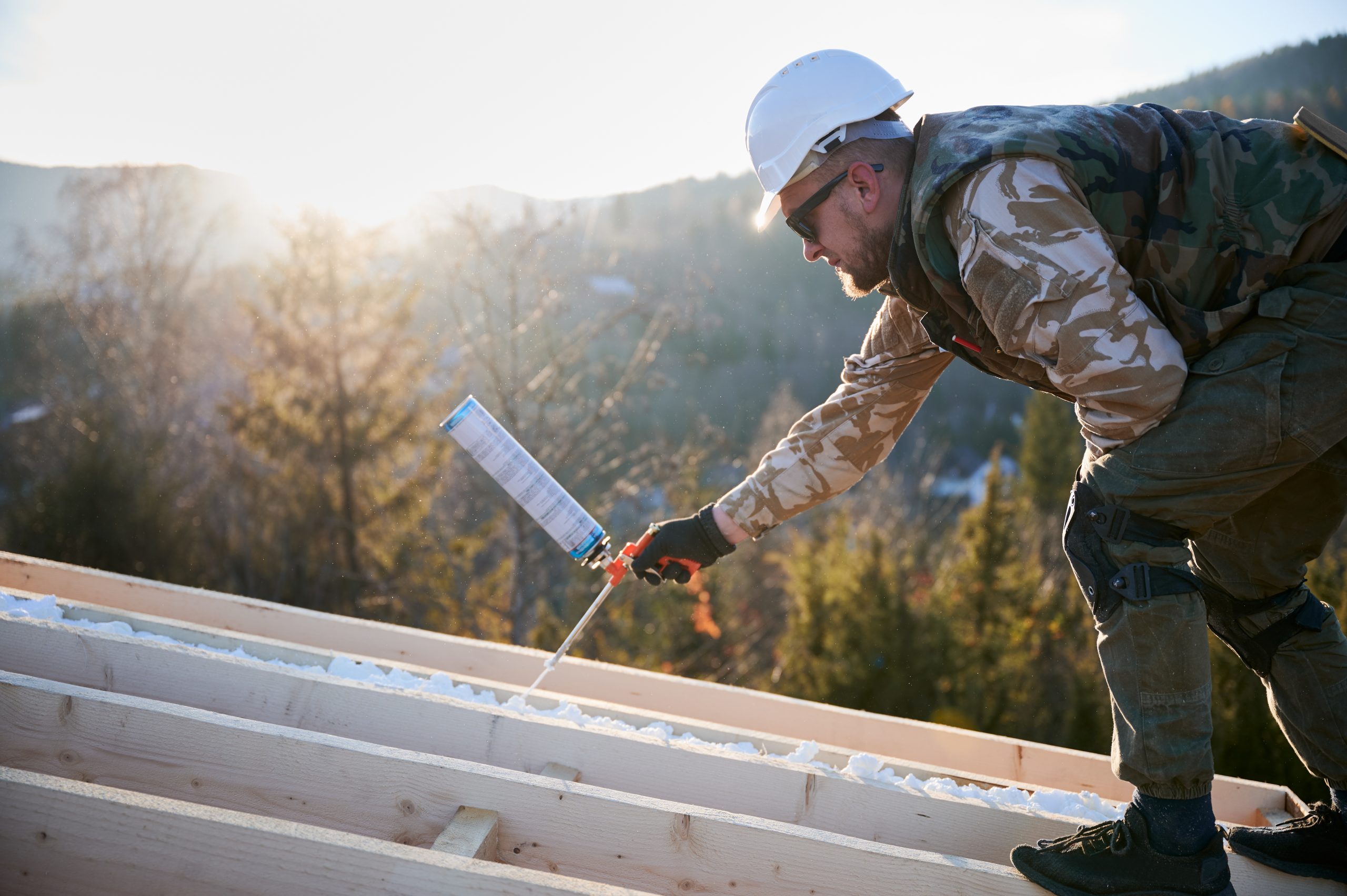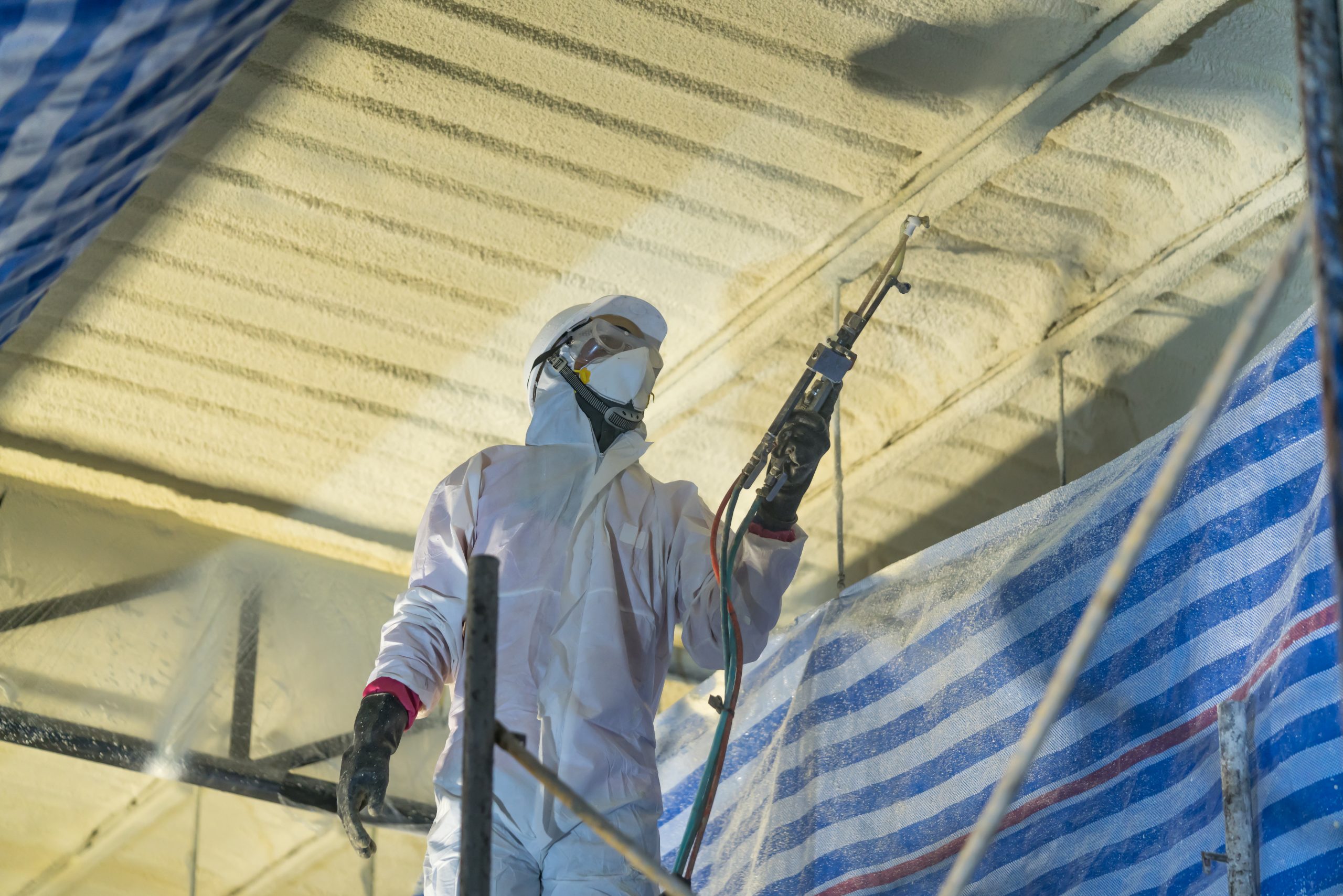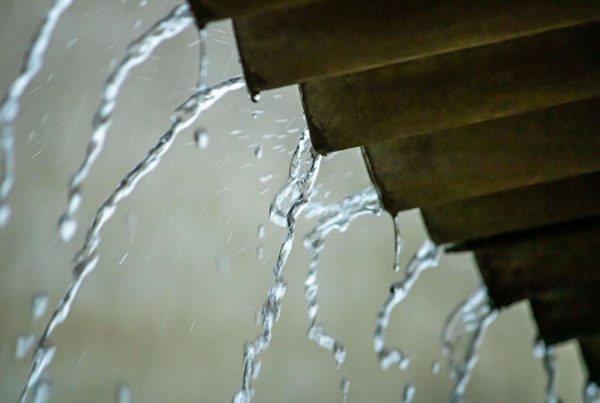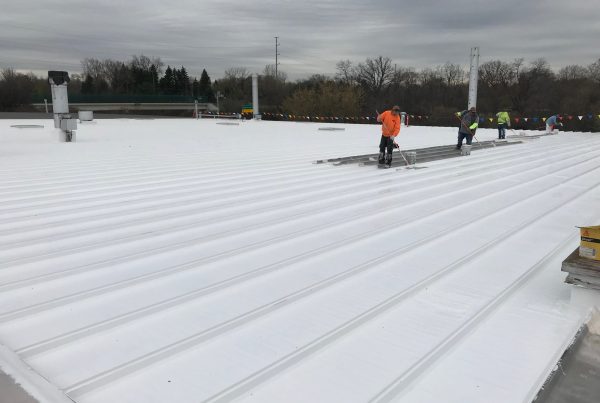
ROI for SPF Is Impressive, Especially Long-Term
As in 30 years—even indefinitely according to some commercial roofing experts. Although attaining such over-the-decades longevity does require care upfront at installation and consistent ongoing maintenance every year, the numbers confirm potential SPF value. Let’s take a look, with an important caveat. Costs within the roofing sector are extremely volatile and, like pretty much everything else as of this writing (November 2022), subject to inflation. Any numbers cited here should be regarded strictly as examples. Actual estimates for any project, including yours, must be provided by a roofing professional with deep knowledge of the industry, expertise in applicable requirements in your area, and specific understanding of your property and job. Here is spray foam cost vs. benefit explained.
SPF Basics Explained
Let’s look quickly at what SPF is all about. SPF is spray polyurethane foam, which is a type of sprayed-on roofing material. The spray foam is a mix of two chemical substances, a polyol resin and an isocyanate. The two elements are stored at the job site in separate tanks and pumped through high-pressure hoses with heat applied. Materials are mixed in a spray gun and sprayed in a thin coat on the surface of the roof. The thin coat of SPF expands in volume as it dries, increasing about 30 times within a matter of seconds. Cured to 1” thickness, SPF yields an approximate R-value of 6.5. R-value measures the capacity of an insulating material to resist heat flow in or out of the building, so the higher the R-value, the greater the insulating power. Many states and municipalities have a minimum R-value requirement for commercial properties, meaning to achieve an R-value of 30, which is the Department of Energy recommendation, you’ll need 4.6 inches of SPF on your roof.
Once installed, the foam must be covered with an elastomeric coating to protect from UV radiation. Bare SPF is extremely UV-susceptible and begins to deteriorate within days, making the elastomeric coating, usually acrylic, silicone, or urethanes, essential to SPF longevity. Granules are added during elastomeric application to further reflect UV rays and also create traction on the roof.
Ongoing maintenance is a fact of successful SPF roofing. While the two-part SPF layer itself is durable for decades, the elastomeric coating does wear thin over time, with replacement necessary every 10 to 15 years. Semi-annual inspections monitor the coating’s condition, as well as finding any other compromises caused by weather, wildlife, or activity on the roof. Fixes should be made immediately while problems are minor and easy to repair.
Multiple Factors Affect SPF Cost
Arriving at an estimate for your SPF system involves looking at a number of considerations that directly impact cost when comparing spray foam cost vs. benefit. Among them:
- Size of the roof. Knowing how many square feet need to be covered is fundamental. Economies of scale do kick in somewhere around the 20,000 square-foot range: Because overhead costs apply to every project, the bigger the roof, the lower the cost per square foot.
- Roof height and access. A roof that’s low and easy to get to costs less than one that’s steeply sloped, high off the ground, or can’t be walked on. Some roofs require the use of cranes, lifts, hoists, or rappelling equipment, all of which are extra costs.
- Condition of existing roof. SPF can be sprayed over one layer of most existing materials, although there are exceptions. In such cases, a coverboard must be installed to the roof deck before SPF is applied. Prep work includes inspection of the roof and repair of damage, removal of debris and loose material like ballast or gravel, replacement of wet insulation, and cleaning of dirty surfaces.
- Number of penetrations. The liquid nature of SPF makes installation around openings for vents, pipes, HVAC equipment, skylights, and other protrusions much easier than with other systems—the foam shapes itself around penetrations as it dries. Still, penetrations are a time factor, and time equals cost.
- Desired foam thickness. The more SPF you need to get to the desired R-value, the greater the cost. Certain types of buildings with greater than normal heating and cooling requirements (think IT companies or chemical plants) need elevated R-values, which factors into roofing costs. Secure Identification Display Area (SIDA) authorization is another possible extra; when a job involves a secure location, background checks and fingerprinting must be completed before workers are allowed on site.
- Elastomeric coating and length of warranty. The amount of UV-protective coating is another variable, and it’s directly related to project warranty. For a 10-year warranty, 20 mils of coating are installed, 25 mils are typical for a 15-year warranty, 30 mils for 20 years. The thicker your coating, the greater the expense.
Many other factors can be involved in a specific situation; your professional roofing partner will help you sort those out and determine how they relate to cost. He or she can also help you evaluate alternatives to SPF roofing. A number of other systems are available, each with advantages and drawbacks that may be relevant to your situation, including cost.

Build a Chart to Look at Spray Foam Cost vs. Benefit
Probably the best way to figure out spray foam cost vs. benefit is to put together a matrix listing items associated with costing and where your job ranks relative to each. Then be as specific as possible as you fill in the blanks and work with your contractor to equate each element to actual dollars and cents.
|
Cost factor |
Low impact on
|
Average impact on price
|
High impact on
|
|
Size of roof (sq. ft.) |
|||
|
Roof height |
|||
|
Roof access |
|||
|
Roof repairs needed |
|||
|
Cleaning, debris removal needed |
|||
|
Coverboard needed |
|||
|
Roof penetrations |
|||
|
Desired foam thickness |
|||
|
Desired coating thickness |
|||
|
Warranty length, type |
|||
|
Cost estimate |
As of November 2022, roofing experts indicate the price for a spray foam roof averages between $8.00 and $12.00 per square foot. If you already have SPF in place, you can also use the chart to estimate recoating costs since most of the same factors apply. Recoating presently runs in the $1.50 to $3.00 per square foot range. But given the many influences at play, costs associated with all aspects of SPF could easily go higher. That may be a good reason to carefully analyze your needs and move ahead as soon as you can.
Bottom Line: SPF May Pay for Itself in 5 Years
Calculating true return-on-investment for any commercial system is a long-term proposition. And while the initial expense for SPF can be somewhat higher than other choices, when it comes to lifetime cost, it pays off.
With a rating of 6.5 per inch of thickness, SPF has the highest R-value of any roof system, keeping more heat and cooling inside your building rather than letting those commodities leak through the roof. That lightens the load on your HVAC units, bringing down your overall energy costs. In some cases, SPF savings are equal to the expense of installation in only five years—your spray foam roof has paid for itself!
And that’s just the beginning of the cost benefits. With proper maintenance and recoating of your basic foam layers every 10 or so years, your roof is renewable, both in terms of performance and an extension of your warranty. While claims that SPF can last forever are probably exaggerated, with proper recoating (never skip that!) your roof should easily last 30 to even 50 years. Contrast that with the lifespans of other common commercial systems, which after 15 to 20 years must be replaced completely, which is always a sizeable expense.
Add the seamless, waterproof, self-flashing, environmentally friendly, easy maintenance characteristics of the system—ROI for SPF is truly significant long-term!


